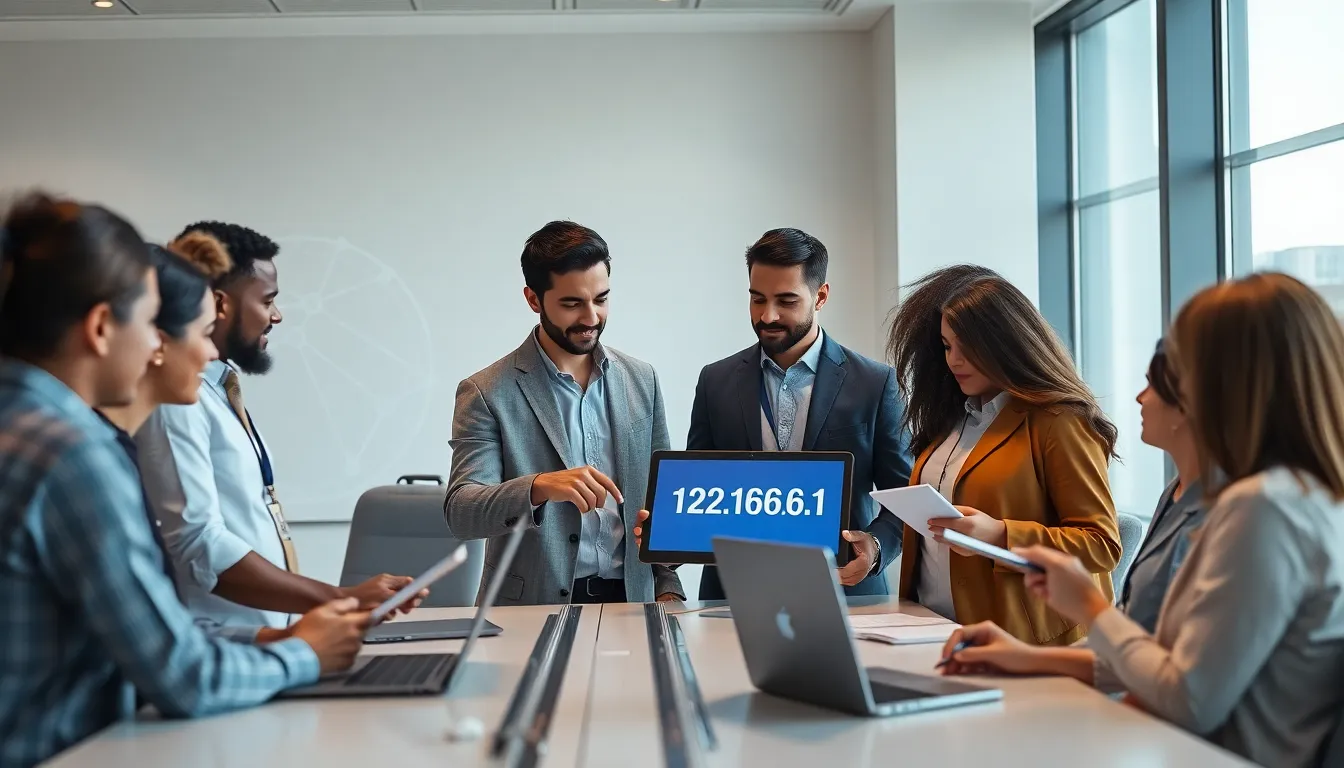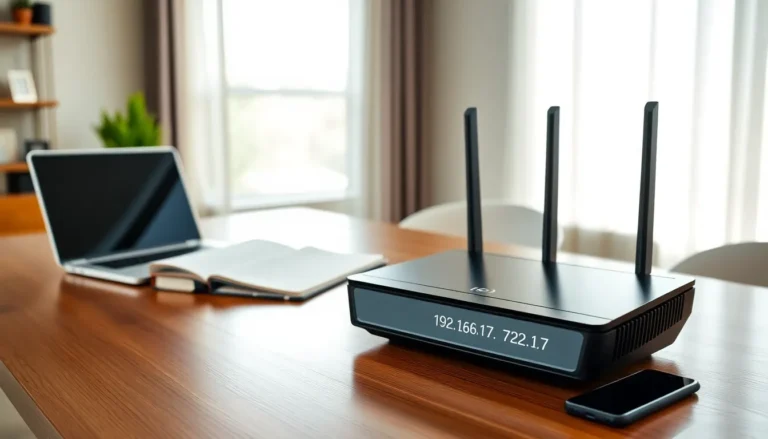Imagine your router is the bustling center of your home’s internet traffic. Every device you own connects to it, yet how often do you think about its hidden identity? Enter 192.168.7.1, your router’s secret handshake to the vast digital world. If you’re scratching your head wondering what this string of numbers means, don’t worry. This article will dive deep into the why, how, and what of 192.168.7.1, making it as easy as pie. So, grab your router, maybe a cup of coffee, and let’s break it down without getting lost in tech jargon.
Table of Contents
ToggleWhat Is 192.168.7.1?

In the world of networking, 192.168.7.1 is classified as a private IP address. But what does that actually mean? In simple terms, it’s like the home address for devices connected to a local network. This number acts as a portal through which your router communicates with all connected devices. Now, every router has its own unique IP address, allowing it to establish its territory on the network. Think of it as each router sporting its personal zip code, making sure all packets of data know where to go. While many routers use addresses like 192.168.1.1 or 192.168.0.1, 192.168.7.1 stands out as a perfectly functional alternative. It’s a gateway into the router’s configuration settings, which is vital for any network administrator, or even just your everyday tech-savvy individual.
The Importance of IP Addresses in Networking
IP addresses, including 192.168.7.1, serve as essential identifiers in a network. Every device, from your smart fridge to your gaming console, requires an IP address to communicate effectively. Without them, it would be like trying to send a letter without a return address, good luck figuring out where to send the reply.
Public and private IP addresses differ in function, and that’s where the magic happens. Private IPs enable devices to converse within the local network, while public IPs help communication with the wider internet. This segmentation helps preserve address space and keeps your personal data secure from prying eyes on the internet. So, when setting up your home network, choosing a proper private IP like 192.168.7.1 makes all the difference in ensuring smooth communication between your devices.
How to Access the Router Using 192.168.7.1
Accessing your router via 192.168.7.1 is a straightforward process, yet it’s one that many might feel apprehensive about at first. If you’re ready to jump into the settings, follow these steps:
- Open a web browser: This can be Chrome, Firefox, Safari, or any of your favorites.
- Type in the IP address: Simply enter 192.168.7.1 in the address bar and hit Enter.
- Enter login credentials: Most routers will prompt you for a username and password. If you haven’t changed this, check the label on the router or consult the user manual. Common defaults include “admin” for both fields.
- Navigate the settings menu: Once logged in, you can manage various settings such as Wi-Fi configurations, security protocols, and more.
And voilà. You’re now the proud diver into your router’s configuration ocean.
Common Issues and Troubleshooting Tips
Even the best networks experience hiccups now and then. Here are a few common issues users encounter when working with their routers, along with helpful troubleshooting tips:
- Cannot Access 192.168.7.1: Double-check that you’re connected to the correct network. If you’re on a guest network or different subnet, access won’t work.
- Forgot Your Password: A common dilemma. If you can’t recall the password, a quick factory reset of the router usually restores default settings, including the original credentials.
- Slow Internet Speeds: This could stem from bandwidth-heavy applications running simultaneously. Keeping an eye on connected devices through the router settings can help identify bandwidth hogs.
- Frequent Disconnections: Interference from other electronic devices can disrupt your connection. Try repositioning your router or avoiding placement near microwaves or cordless phones.
These tips can eliminate most common frustrations, allowing for smoother network experiences.
Configuring Your Router with 192.168.7.1
Once in the configuration menu at 192.168.7.1, you might consider a few essential setups that will enhance your browsing experience:
Change the Default Password
Security starts with ensuring your router isn’t an easy target. Change the default admin password to something more complex to fend off potential intruders.
Set Up a Guest Network
For visitors who need internet access, enabling a guest network allows for convenient connectivity without sharing your main network credentials. This keeps your home network safer and more secure.
Adjust Wi-Fi Settings
Customizing the SSID (network name) and Wi-Fi password gives your network a personal touch while ensuring it’s memorable. Don’t forget to choose the right encryption method, like WPA2, to safeguard against unauthorized access.
Update Firmware
Firmware updates can greatly improve performance and security. Check manufacturers’ websites for the latest updates and apply them regularly. Doing so ensures you’re always using your router’s capabilities to the fullest.
These simple configurations not only enhance security but also create a more enjoyable internet experience.
Security Considerations for Your Router
When it comes to home networking, security should never be an afterthought. Here’s how to ensure your router, and by extension, your entire network, remains secure:
- Use Strong Passwords: As mentioned before, strong passwords make a significant difference. Avoid anything easily guessable and opt for combinations that include letters, numbers, and symbols.
- Regularly Update Firmware: Manufacturers release updates to counter security vulnerabilities. Set periodic reminders to check for updates or activate automatic updates if available.
- Disable Remote Management: Unless absolutely necessary, this feature should be turned off. It’s a potential entry point for hackers.
- Enable WPA3 Encryption: If your router supports it, switch to WPA3 encryption for robust security. It’s the latest and most secure option available.
By taking these steps, your network will have a solid layer of protection, providing peace of mind.



